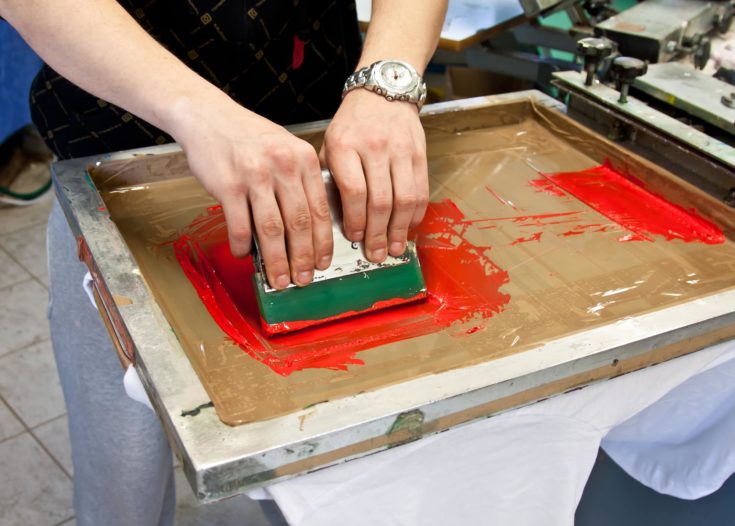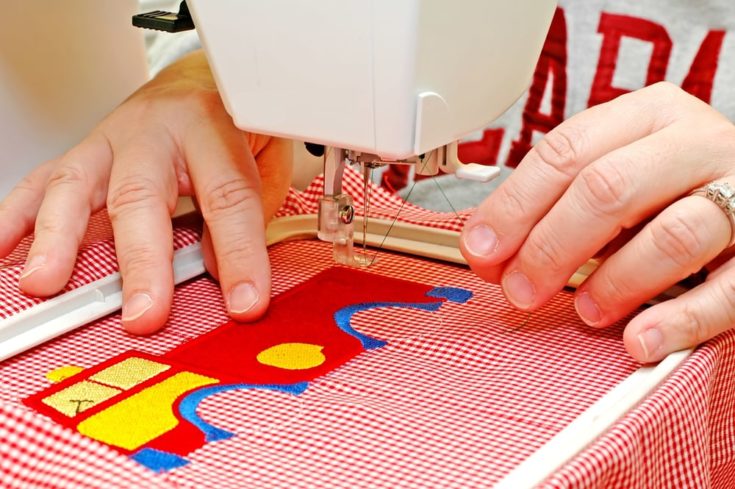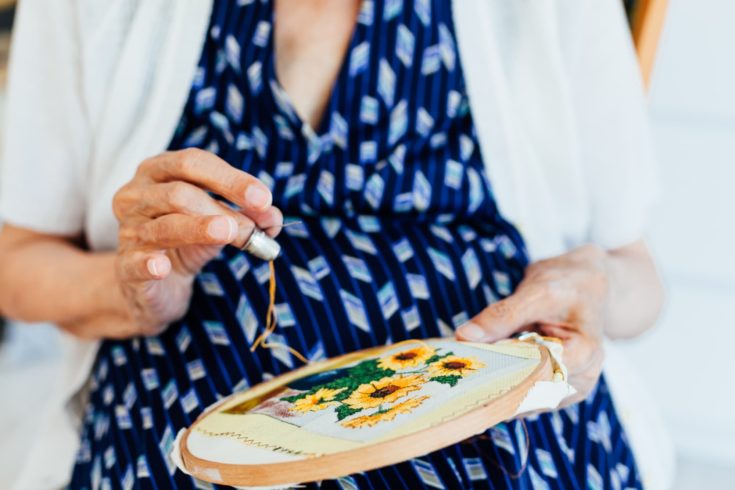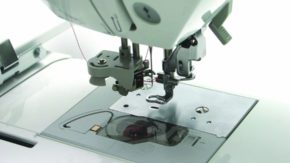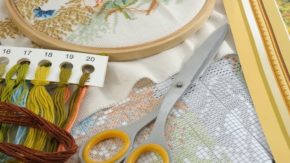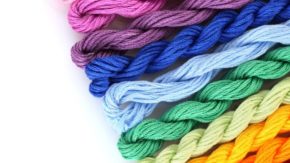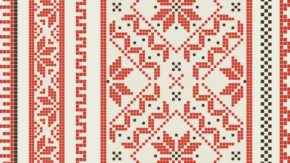Whether you are a DIY crafter or inspiring to be one, you can’t help but be enthralled with the ways you can personalize your own clothing and fabric products. Both screen printing and embroidery produces professional-looking results, but neither is difficult to accomplish if you know what steps to take.
This article explores the differences between screen printing and embroidery and how each can be accomplished with the right tools and a little bit of practice. Take a look at what each requires to get started, and what you can create to decide which to get started with first!
Screen Printing VS. Embroidery Comparisons
| Screen Printing | Embroidery |
|---|---|
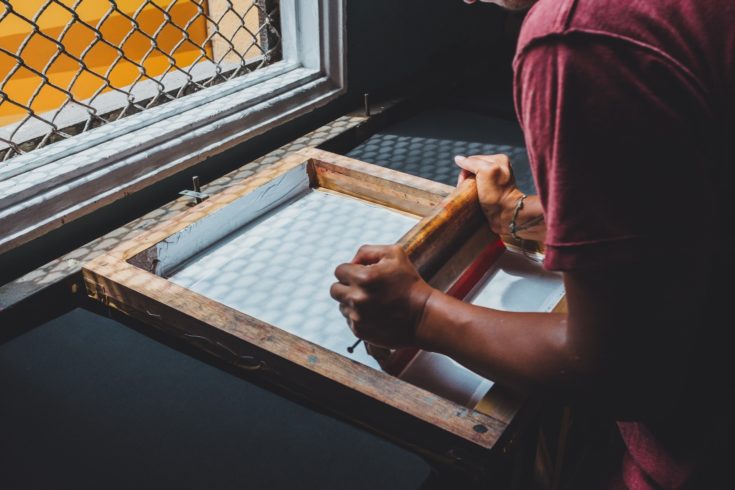 |
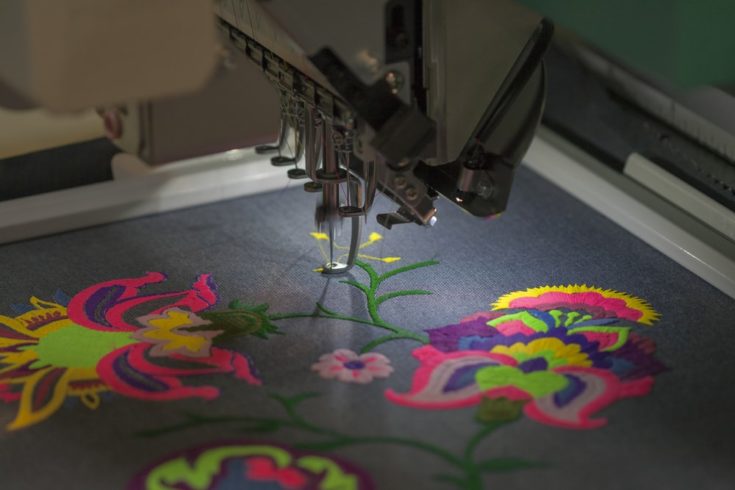 |
|
|
Screen Printing
Pros
- Easy and budget-friendly
- Can be used to transfer images onto a wide variety of materials
- Creates great contrast against a dark background
Cons
- Doesn’t work well on thicker or fuzzy materials
- The screen must be prepared which can take time
- Not great for detailed or colorful designs
What is Screen Printing?
Screen printing is a process of pressing ink through a finely meshed screen onto another surface, such as fabrics, clothing, paper, wood, plastic, and other ink-friendly materials. Also called silk screening or silk screen printing, it used to use fine silk for the stencil, but today there are other options to make your screen from, such as polyester or even metal.
Various colors can be layered using this technique through the use of multiple screens specific to each layer of color. Digital technology has made it easier than ever to make these layers accurate so your results are the same each time you use a screen.
What is Screen Printing Best For?
Screen printing creates vivid, bright colors even against a dark background due to how thick the ink is laid on the material. It is a popular technique for simple designs such as brand logos and lettering that don’t use more than a few colors. It also is a technique that is often considered the best for when many of the same design needs to be printed over and over.
How Can I Screen Print At Home?
Even though this is a technique that is often professionally done, it is an easy technique to do at home as well. You can buy kits for this if you want or simply start from scratch after purchasing a pre-made screen (which I recommend as they are pulled nice and taut) and transferring your image to the screen. But if you are really on a budget, you can even use pantyhose, or like materials, and an embroidery frame!
You can use special printer paper to transfer images, paint your negative design on using a decoupage glue, or even use an adhesive vinyl to create your own stencils from. You also need special ink and a squeegee to create vibrant, permanent color!
Take a look at this video that showcases the entire process for easy, DIY at home prints!
Embroidery
Pros
- Allows for a wide array of colors and designs
- Easy to do at home by hand and with a machine
- Long-lasting and does not fade
Cons
- Only can be done on materials that allow a needle to pass through
- More expensive than screen printing
- Time consuming when done by hand
What is Embroidery?
Embroidery is the art of creating artistic designs and patterns to various fabrics. This is accomplished using colorful threads and various stitches that create textured effects. It can be done using different techniques, such as by hand or machine, and is a way to transfer images that are more detailed in nature or include multiple colors.
What is Embroidery Best For?
Like screen printing, embroidery is a popular way to brand items with logos and other commercialized images- especially if they contain a lot of detail. However, the technique is highly stylized and artistic and is an art form in and of itself.
Hand embroidery creates one of a kind results due to the choices the creator makes pertaining to color, stitch variances, and personalization. Hand embroidery typically isn’t used to create more than one image at a time either as something to display or embellish clothing or other material items.
Machine embroidery can also be a unique expression, as many images can be created digitally to showcase the choices of the creator. Machine embroidery can also be used to create multiples of the same image over and over quickly and efficiently, and is a popular way for companies to brand products that are more complex in shape and color.
How Can I Embroider At Home?
Embroidery is an easy technique to do from home, whether you choose to do it by hand or machine. Both require the proper embroidery threads and an embroidery hoop to help keep your material nice and tight as you work. Machines come with specialized hoops to fit the choice of machine you have.
You can work from patterns: on a machine they are digitized into the machine, or can be added via USB to take advantage of embroidery software and other downloadable designs. There are many different types of machines designed for both beginners and more professional embroiderers.
Or you can free-hand it as well! Many kits are also available to help get you started when working by hand, and patterns are easy to download and print for transfer onto your fabrics.
Take a look at this video to see how an embroidery machine works when transferring a design onto a shirt!
Conclusion
Both screen printing and embroidery are a great way to add embellishments and images to clothing and other various surfaces. Screen printing allows you to add print to not only fabric, but also wood, glass, plastics, and other ink-friendly materials, while embroidery is specific to fabric and other materials that allows a needle to pass through it.
Both can be done from home in various ways, and can be fun, inexpensive crafts that create personalized touches to your own work, as well as for gifting. We’d love to answer any questions you may have and, as always, please share!
